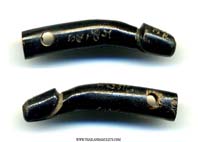Description
Legend of Somdej Phra Puttajarn To Promransri, Thailand
Paladkhik
Paladkhid from WatBarngphra made from black coral, craft with mantras. Paladkhik can wear around waist or neck, bless/chant to bring powerful charm and attractiveness fortune to the wearer, kindness love and respect from people around. Paladkhid is famous, people use for charm purpose until present day. Paladkhik also bless/chant to bring good luck fortune, create regard the sacred symbol of Shiva lingam.
Shivalism
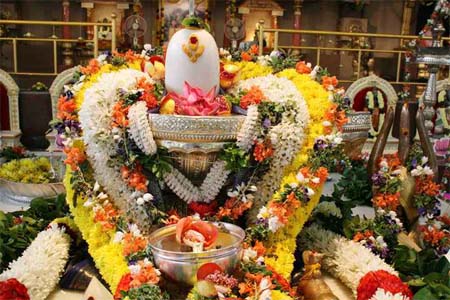
Click here for more about Shivalism
More about Black Coral
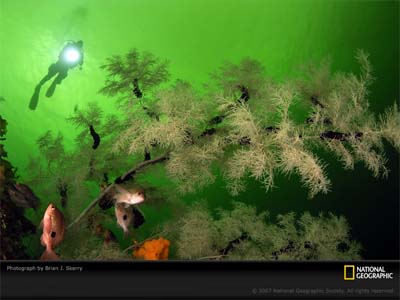
Phylum Cnidaria (Coelenterata), Class Anthozoa: The diversity of corals is manifest by forms with widely known common names such as brain corals (Diploria and M?ndrina), organ pipe coral (TubiporaI), precious coral (Corallium) and chain coral (Halysites), which is extinct. In modern seawater: Skeletons secreted by scleractinian corals (the "hard [or stony] corals") consist chiefly of aragonite; skeletons of some "soft [octo] corals" are chiefly high-Mg calcite with small amounts of calcium phosphate [bioapatite] (Justin Ries, personal communication, 2006); skeletons of antipatharian corals consist of horn-like proteinaceous material(s), variously recorded as antipathin, chitin, conchiolin, gorgonin and/or keratin. Although coral skeletons with each of the just mentioned compositions have been used in fashioning decorative items, most of the following properties are for the corals most widely recognized for their use in jewelry and/or decorative pieces -- i.e., so-called precious coral and black coral.
Colors - White, red, pink or orangy pink, blood-red, black" (i.e., intense black to brownish black), and rarely yellow, bluish or violet, with some exhibiting more than one color -- e.g., some chiefly white coral exhibits small, irregular zones that are pink, orange or pinkish orange. "Corallium rubrum [(Linnaeus, 1758)] is pure red with no white spots, while Corallium japonicom and Corallium elatius[Ridley, 1882] ... always have some white in them [Initial upper case letters and italics given on scientific names were not in original article.]. And the difference between these two is that japinicum is shiny like glass, while elatius is dull." (Peter Rohn per Yonick, 2003, p. 8)
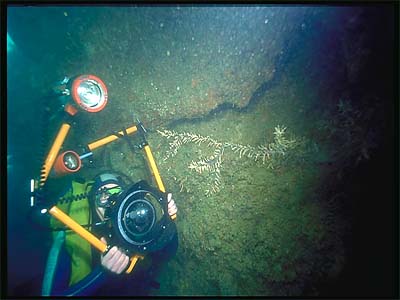
Luster - dull to subvitreous; see also last sentence under Colors.
Breakage - uneven to splintery
Miscellaneous - Red and white coral effervesce(fizz) vigorously with dilute (10 per cent) HCl; black, blue and other keratinous corals do not. Precious coral is striated along the length of its "branches" and exhibits concentric layers in sections that transect the branches. (When viewed microscopically, the layers can be seen to be made up of alternating red (of diverse hues) and nearly white layers, each of which consists of fine fibers that are nearly perpendicular to the layering.) Black coral skeletons are relatively flexible and when heated by, for example, a hot point emit an aroma that resembles that of salty burnt hair.
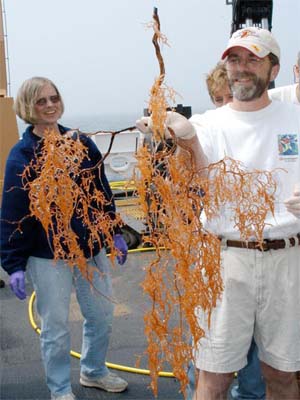 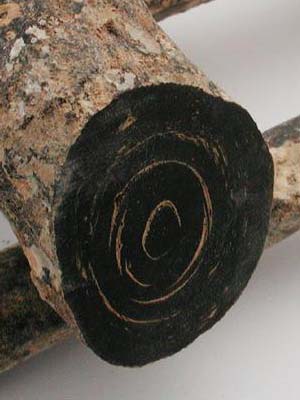
OTHER NAMES: The following are names noted here and there in the literature with examples of references given for most of them. Other names that are noted as used, but for which I have found no descriptions, include scotch (does this refer to coral of Scotch Banks near St. Croix) and magai (see, however, page 10, bottom left photograph and caption on the great, so far as coral is concerned web site
- Aka - name sometimes given Corallium japonicom. (Rohm per Yonick, 2003)
- Akabar (also accarbaar) - "A name used for [keratinous] black coral in Indian Ocean region."(Shipley, 1951). According to Bauer (1913, p.615) this material is "shining pitch-black, branched skeleton ... may reach a length of 2 feet and a thickness of some inches [; and] It is formed not of a calcareous, but of a horny substance...[It] can therefore be moulded ... [and] is much esteemed there, and often constitutes the substance of which sceptres used by native kings and princes are made, hence the term king's-coral ... is also applied to it."
- Akori (also called blue coral) - "A porous [keratinous] coral which, previous to beginning of the 18th Century was fished and fashioned and prized by the negroes of West African coast. Red, blue or violet. Has also been fished in Samoa. ... The name has more recently been applied to substitutes such as rock, glass, and pearl with little nacre." (Shipley, 1951).
- Angelskin (or angel's-skin) - "a blush pink or peach" coral, apparently from one or more of the Corallium ... species from western Pacific. (Rohm per Yonick, 2003). - See Pelle d'angelo.
- Areiscuro (or Carbonetto) - "very dark red (ox-blood red)." (Webster, 1975, p. 501)
- Bianco - pure white coral (Webster, 1975, p. 501).
- Carbonetto - see Ariescuro.
- Horn coral - name sometimes applied to the black and golden antipatharian corals (e.g., H?nni, 2005).
- Japanese coral - "Coral from Japanese waters. Usually pink in color with white centers. Beads and cut specimens pink, often flecked with white." (Shipley, 1951, p.117).
- King's coral - See Akabar.
- Momo - "the light to dark red color" coral (Corallium elatius Ridley, 1882) from the sea between Japan, Taiwan and the Philippines. (Rohm per Yonick, 2003)
- Moro - "the precious coral ... [from the Ryukuan islands, south of Japan, which is] the blood-red variety" (Webster, 1975, p. 501)
- Mushi - "momo [q.v.] with lots of holes." (Rohm per Yonick, 2003)
- Noble coral - name sometimes given to precious coral in the marketplace.
- Pelle d'angelo - "pale flesh pink (angel's skin)." (Webster, 1975, p. 501)
- Precious (red) coral - name frequently applied to the red or pink coral (Corallium rubrum (Linnaeus, 1758)), which is used widely as a decorative material. In French, it is called corail rouge; in German, Rote Edelkoralle; in Spanish, coral rojo; and in Italian, corallo rosso, usually with the appropriate adjective, as noted in the next three names.
- Rosa pallido coral (Italian) - pale red coral. (Shipley, 1951, p.195). This and the next two terms have had wider usage than one might expect for Italian designations, apparently reflecting the fact that so much of the coral "industry" was long centered in Italy.
- Rosa scuro coral - dark red coral. (Shipley, 1951, p.196)
- Rosso vijo (or vivo) coral - vivid red coral. (Shipley, 1951, p.195 & Webster, 1975, p. 501)
- Sardegna - name sometimes given Corallium rubrum (Linnaeus, 1758) from the Mediterranean. (Rohm per Yonick, 2003)
- Secondo coloro - "salmon colour (second colour)," (Webster, 1975, p. 501)
- Shiro - name given "Corallium konojoi [sic. -- probably Corallium konjoi Kishinouye, 1903] ... is the white coral from around Japan and Hainan, which has some reddish spots." (Rohm per Yonick, 2003)
- Sponge coral - Melithaea ochracea (Linnaeus, 1758) -- so-named because it roughly resembles sponges -- i.e., it is so-to-speak vesicular. That used in jewelry, which comes chiefly from the South China Sea, is typically orange-red, but some that are yellow or brownish also find use. Most of these corals have so much open space they are "stabilized" by filling their open spaces with a resin or polymer, and frequently dyed, before being fashioned into jewelry. And, some is "crushed up, mixed with epoxy, and formed into desired shapes" -- i.e., they are reconstructed coral (Roskin, 2004).
- Tosa coral - "Medium quality of Japanese coral."(Shipley, 1951, p.234)
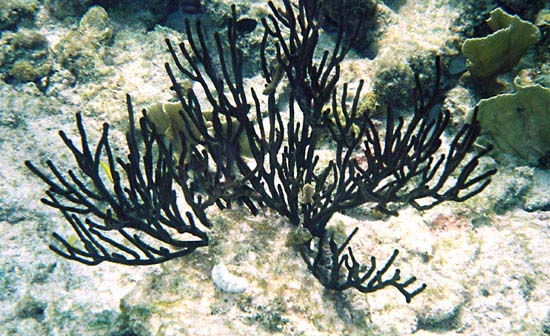
USES: Kunz (1913, p.69) notes that "for twenty centuries or more [coral] was classed among the precious stones." H?nni (2005, p.6.), reference to today notes "Coral is a particularly fascinating gem material. It incarnates our longing for summer, sun and oceans. And coral is coming back into fashion." Virtually all of the coral Kunz was alluding to was what is now called precious red coral (Corallium rubrum Linnaeus, 1758) from the Mediterranean. Today, that red coral along with the closely related pink coral (Corallium --Cuvier, 1798-- spp.) and "other" red corals, for which species names have been suggested for animals that are likely subspecies, from some localities in the western Pacific continue to be used. And, the hard parts of several other corals and related animals -- all marketed as coral(!) -- are also harvested for use in jewelry and diverse decorative pieces. Examples of these other corals are: Bamboo coral (Lepidisis olapa Muzik, 1978 and Acanella gregorii Gray, 1870); black coral (Antipathes --Milne-Edwards & Haime 1857-- spp., including A. dichotoma Pallas, 1766 and A. grandis Verrill, 1928 and also Myriopathes ulex (Ellis & Solander, 1786) and Cirrhipathes anguina (Dana, 1846); blue coral (Heliopora coerulea (Pallas, 1766)); and gold coral (Callogorgia elegans Gray, 1858 and Parazoanthus --Haddon and Shackleton, 1891-- sp. (widely referred to as Gerardia sp, a "not accepted" name), Primnoa resedaeformis (Gunnerus, 1763) and Primnoa willeyi (Hickson, 1915). In addition, several white corals (order Scleractinia) are used rather widely in so-called summer jewelry, diverse decorative items (e.g., Figure C) and as showpieces. Corals of two orders and seven species are listed as "corals in trade" in the fine summary of The Australian Gemmologist (2004), a publication (web site) that is well worth reviewing by anyone interested in corals used in jewelry etc. -- among other things it includes descriptive material and fine photographs of bamboo, blue and gold corals, which are used in jewelry etc. but only mentioned here.
The best of Thailand Buddha Statues/Amulets at
www.thailandamulets.com / www.thailandamulet.com
|
|




